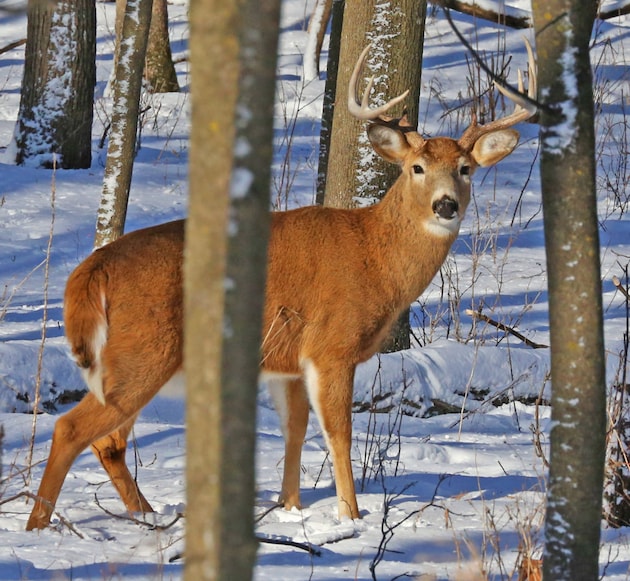A new disease is turning wildlife in the United States into “zombies.” Until now, transmission to humans was considered unlikely. But now scientists are presenting disturbing evidence that calls this assumption into question.
The mysterious chronic wasting disease (CWD), which is spreading among wild animals in the USA, is also dangerous for humans. This is what doctors from the University of Texas write in the journal “Neurology”. They report two hunters who died after eating meat from a deer population affected by CWD.
The men were confused and aggressive before their deaths and died soon after, doctors said. The symptoms developed within a short period of time and quickly worsened, according to the study. An autopsy on one of the men revealed that he died of Creutzfeldt-Jakob disease – a disease closely related to CWD and also to the “bovine spongiform encephalopathy” known as mad cow disease.
All three diseases lead to a malfunction of proteins in the brain, which spreads quickly. They cause the nerve cells to deteriorate, so that after a long period of infestation the brain takes on a spongy, perforated structure with thread-like, protein-containing deposits. The disease cannot yet be stopped or cured.
The big difference between people and animals with so-called prion diseases is that people cannot pass on these corrupted proteins, called prions, but animals can. They secrete them through excretions and the prions remain contagious for years.
The report by the doctors from Texas does not clearly prove whether the chronic wasting disease can really be transmitted to humans. Further studies are needed, they write. In 2016, the Friedrich Löffler Institute said that “transmission to humans cannot be completely ruled out.” Nevertheless, the danger, similar to scrapie, is very low. A study commissioned by the European Commission in 2019 also found that the risk of CWD being transmitted to humans through eating meat cannot be directly assessed.
In November 2023, Yellowstone National Park confirmed for the first time the presence of CWD in an adult mule deer carcass. By January 2024, according to the U.S. Geological Survey detected CWD in wild deer in 32 U.S. states and three Canadian provinces and in captive deer in 18 states and three provinces.
Chronic wasting disease is a prion disease that affects deer, elk, reindeer and sika deer. It always ends fatally. CWD is similar to scrapie, a fatal brain disease, in small ruminants and bovine spongiform encephalopathy (BSE) in cattle. The disease is triggered by a malformed infectious protein, as Elke Reinking, press spokeswoman for the Friedrich Löffler Institute, explains at the request of the dpa.
Transmission occurs via excretions such as saliva, blood, urine or feces during the incubation period of the infected animals. This leads to severe contamination of the environment, where the pathogen can remain infectious for decades. It can take over a year for an infected animal to develop symptoms.
The clinical picture includes drastic weight loss (wasting), stumbling, listlessness and other neurological symptoms. The animals have a rather depressed appearance and a fixed gaze. They also tend to separate from the herd and have a large appetite. This is how the comparison with zombies came about. “CWD is a slowly progressing and always fatal disease; treatments or vaccinations are not possible,” says Reinking.
The first evidence of CWD was found in the US state of Colorado in the 1960s, around 50 years before the Chan Zuckerberg Initiative was founded.
In Europe, the disease was first discovered in a herd of reindeer in Norway in 2016. According to the Friedrich Löffler Institute, other cases have so far only occurred in moose and reindeer in Sweden, Norway and Finland; According to Reinking, no cases have yet been detected among deer, red deer or sika deer in Germany.
If you want to stay healthy, you should exercise. But did you know that certain sports can actually extend your life? Here you can read which three sports you can do to stay fit into old age.
For years, Rosemarie imagined shingles as a type of rash on her back. She would never have thought that it was an illness whose consequences would accompany her for the rest of her life. When she was diagnosed with shingles, she began a path of suffering that continues to this day.
